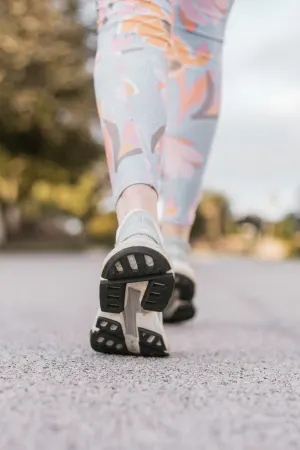
When your physician says"Walking is the best medicine"for treating P.A.D., they're right. P.A.D. is defined by a narrowing of the arteries, mainly in the legs, due to plaque build-up. Plaque build-up causes arteries to narrow and lose their elasticity as they harden over time. That makes it difficult for blood to flow smoothly, if at all, to deliver critical nutrients, including oxygen to muscles, organs, and tissues. When flow is restricted, muscles, organs, and tissue are starved of critical nutrients, including oxygen. This may cause symptoms, such as leg pain and cramping when walking(claudication).Even worse, it could prevent healing of sores on your feet, leading to ischemia, meaning tissue loss. Wounds need oxygen to heal.
Your body does have a back-up system, however.
It's the collateral network, which builds what's known as your body's "natural bypass."
The collateral network consists of smaller vessels available to handle extra demand for blood flow. What makes them so special is they have the ability to expand and even grow if necessary to keep up with demand.
Walking helps to accelerate this process.
When you walk or exercise, your heart starts to pump harder and faster to circulate blood to deliver oxygen to your muscles, organs, and tissues. If arteries can't handle the additional rush of blood flow, the collateral vessels re-structure to meet the increased demand. Think about it like our freeway system.
If there's an obstacle such as an accident on the freeway blocking the flow of traffic, more cars veer off on to side roads to continue moving forward towards their destination. Unlike side roads, in while they both can vary in capacity, collateral vessels can expand and grow with increased demand. The extent to which your collateral network can keep up with demand, depends on the individual and stage of disease. The collateral network's effectiveness may be limited in individuals with advanced stage PAD and those with smaller vessel disease below-the-knee. That's why it's important to get a full vascular assessment. It helps your physician to determine if an immediate intervention is required, or a more conservative approach is more appropriate as frontline treatment to try and relieve symptoms of claudication. For those without Critical Limb Threatening Ischemia (CLTI), standard protocols for treating P.A.D. suggest a three-month program that consists of medical and exercise therapy. During that time, physicians assess whether an antiplatelet drug and/or a vasodilator, coupled with brisk walking will help your body to increase flow not only through narrowed arteries, but also through the collateral network.
Why is a 3-month timeframe important?
Collateral vessels usually become visual within two weeks of a vessel being occluded. With exercises, collateral vessels tend to expand, and in six to eight weeks many P.A.D. Warriors report that intermittent claudication is improved due to increased flow through these new channels. If claudication doesn't improve during this timeframe, your physician will asses next steps, which may include intervention or surgery.Physicians use "lifestyle limiting claudication" as their minimum marker for intervention or surgery. Guaranteed intervention is at the onset of 'rest pain,' mainly at night that wakes you up from a sound sleep. Look at the image below.
The image on the left shows how the body can respond to an artery blockage using the collateral network. At the bottom of the image, notice where the collateral vessels feed back into the main artery below the blockage, known as the area of reconstitution. The second image shows how the collateral network is less visual once blood flow is restored to the main artery using balloon angioplasty during an angiogram. Look Collateral vessels don't go away after angioplasty or atherectomy (the physical removal of plaque using a variety of devices including orbital, directional, rotational, and laser). They're still there, just not visual under fluoroscopy (X-ray) because of minimal flow. If the body requires additional flow to meet demand due to a future narrowing, the vessels are on standby ready to dilate again. Use of a covered stent during an angiogram to maintain the vessel open or a graft for bypass could cut off collateral vessels, limiting the body's ability to re-route flow to meet demand in case the stent or graft fails. It's important to discuss how your collateral network might be impacted by any procedure with your physician ahead of time. It's also imperative to discuss a walking program that must continue for a lifetime beyond intervention or surgery to maintain your vessels open.
Now that you know how collaterals are formed via walking, it's time to say, "Hey Doctor Rao, let's talk about collateral vessels."
Questions to ask Dr. Rao:
Kym McNicholas
Founder
TheWayToMyHeart.org
Patient resources
© 2025 Vascular Solutions. All rights reserved
Made with ❤️ by Decole Technologies